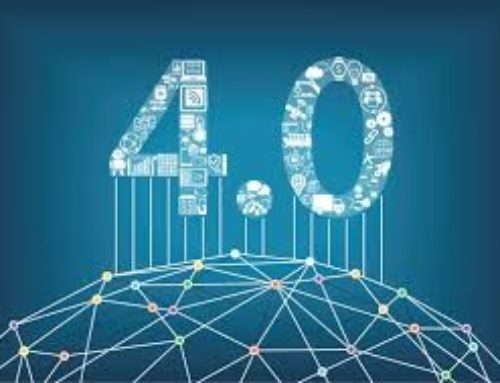
As Digital Transformation (DX) is this year’s corporate buzzword, let’s take a quick snapshot of the digital landscape from the perch of a senior executive.
SNAPSHOT
Global Executive Studies (2015)
90% agree digital is strategic priority
80% have a digital strategy
40% haven’t begun transformation
90% “pressing need for digital talent”
7% companies totally digitally integrated;
2X report industry leading profit, growth
So what are global executives telling us about the State of Digital Transformation?
- Executives acknowledge digital as a strategic priority, but most don’t have the staff or skills to deliver the strategy!
- Less than half have begun a transformation process.
- Less than 10% have totally digitized their companies realizing outstanding performance in profit and customer experience.
This sets the context for those wanting to implement or refine their DX; a strategy that is often misunderstood. Most executives focus on the “D” digital tools and not the “X” the organizational change, the sustaining element in
 business transformation. Yes, digital technologies are the drivers. But successful digital transformation begins with your comprehension of the Networked Economy and the organization necessary to deliver the change- People (senior leadership and the C-suite); Commitment (necessity for change); Culture (level of digital preparedness); and Strategy (transformation plan).
business transformation. Yes, digital technologies are the drivers. But successful digital transformation begins with your comprehension of the Networked Economy and the organization necessary to deliver the change- People (senior leadership and the C-suite); Commitment (necessity for change); Culture (level of digital preparedness); and Strategy (transformation plan).
Companies and organizations across the globe, B2C, B2B, government agencies, and nonprofits, are facing the necessity of the challenge of “Digital or Death?” They realize they have no choice but to enter the path of digital integration and transformation.
But most executives don’t understand the underlying forces that have created this digital tsunami and economic revolution. They don’t know where to start; how to introduce the change into their existing company; what is the roadmap to transformation (from the OldCo to the NewCo); and what resources will it take to successfully transform their old company into a Digitally Integrated Organization.
Without this knowledge or outside guidance, they face explosive digital “minefields” that can significantly disrupt and deter the success of their digital transformation process.
In working with companies in many different verticals in both B2C and B2B, our Entwine Digital team has noted five potential “minefields” for companies to acknowledge and anticipate in beginning or expanding their transformation to becoming a digitally integrated organization.
- Networked Economy…creating value

First and foremost executives must realize that today’s global economy and marketplace is not driven by the same principles and best practices of their current business–industrial or IT economies are built on mass production, controlled assets, and centralized, efficient organizations. The Networked Economy is driven by ACCESS to high–speed, multidimensional, extremely interactive, real-time connections among people, devices and organizations. This hyper connected economy is dominated by ecosystems which are managed by platforms. To build a new mobile phone, you can’t just have an innovative product but require a network of developers to support the new product. Launching a new service (e.g., Airbnb) requires a global social network connected via a software platform. These platforms are built on the semantic web which unifies and connects disparate data across categories and databases, thus generating unprecedented opportunities for collaboration and customization. The currency of this economy is integration of knowledge, resources, structures and connections. Thus, if you are transforming an existing business, you must reformulate your value proposition and how you are delivering value to your targets. In launching a new venture, you must leverage the assets of the Networked Economy. This new economy generates “minefields” for executives throughout the company, as they face change: how the company innovates and creates value; how it communicates and distributes that value; how it uses data and augments value; and how it builds culture and organizational structures to sustain and scale the value.
- People… initiator of change
As the need for digital transformation is a well-recognized in most C-suites, the initiator plays a critical role in terms of speed and success of the change. When the initiator is a team of millennials or managers outside the senior leadership, as was the case with a multinational B2C company, there was a tacit agreement and understanding of the need for change. But this initiative faced roadblocks and resistances from the traditional powers in the organization. On the other hand, when the CEO of another client initiated the process of change, it progressed, but at a more rapid pace then the organization could manage or sustain. Most CEOs lead the company vision; often, they can see the end but don’t focus on the multiple steps necessary to achieve a successful transformation process. Therefore, it is essential to coach the senior leadership team to listen to the needs of the managers and provide a realistic time frame for the transition. The change process must consciously include representatives from the millennial generation, as they will create and facilitate new ways of thinking and operating, as well as promoting the change. Guiding the ‘initiators of change’ can help to avert “minefields” that could block success.
- Commitment … necessity for change
Many companies are considering digital transformation because it’s projected as a critical path for success. They haven’t bought into it, committed internally, adopted the mindset or experienced the necessity for their survival and competitive advantage. They respond to the industry buzz or the campaigns of their competitors. Most companies “fool themselves” beginning digital transformation by only adopting social and mobile tools. The process of transformation becomes an add-on instead of organically growing from the values within the company and resulting in comprehensive change.
Our team faced this situation with a client that wanted to digitize their B2B marketing efforts but didn’t even have a formal marketing department! In this company the senior executives were “traditional,” and not prepared for the change; there was much resistance. Although the strategy we designed was engaging and harmonious with their values and future goals, the senior executives chose to begin by incorporating digital tools with their more traditional marketing. Instead of looking at transforming the company’s mindset and incorporating a digital way of thinking, they took the more comfortable and known route. As transformation is complex and requires some risk, it takes perseverance and constant effort. Often, the “minefield” is the commitment behind the transformation initiative.
- Culture… digital preparedness
Successful digital transformation grows from within the core of the company culture. It begins with implementing their values and integrating them into strategy and tactics. Transforming an organizational culture is fraught with “minefields.”
In beginning a transformation process, senior leadership is faced with many sensitive challenges. They are invested in what worked in the past. Most focused on profit and pushing their message to their target market. The best practices of the Networked Economy are “foreign concepts,” often antithetical to the executives past successes and their decades of training. The change process is threatening to their professional credentials and job security, as well as the way they see themselves in the newly structured digital organization.
Traditional executives face the challenges of expanding their approach to a “quadruple bottom line” (people, planet and community prosperity join profit as the goals) and adopting the values of the global digital revolution (transparency, collaboration, agility, integrity) —where the “customer and employee first” strategy is paramount. This transformed culture focuses on listening and being responsive to the consumer instead of controlling and dictating the terms of the marketing transaction. By design the new organizational culture is open to constant change and innovation.
One of our media clients chose to focus their digital transformation effort on the integration of a mobile interactive application with their traditional newspaper editorial process. This challenged the mindset of the company! Initially, the new technology created some resistance, butnies to acknowledge and anticipate in beginning or expanding their transformation to becoming a digitally integrated organization.
- Networked Economy…creating value

First and foremost executives must realize that today’s global economy and marketplace is not driven by the same principles and best practices of their current business–industrial or IT economies are built on mass production, controlled assets, and centralized, efficient organizations. The Networked Economy is driven by ACCESS to high–speed, multidimensional, extremely interactive, real-time connections among people, devices and organizations. This hyper connected economy is dominated by ecosystems which are managed by platforms. To build a new mobile phone, you can’t just have an innovative product but require a network of developers to support the new product. Launching a new service (e.g., Airbnb) requires a global social network connected via a software platform. These platforms are built on the semantic web which unifies and connects disparate data across categories and databases, thus generating unprecedented opportunities for collaboration and customization. The currency of this economy is integration of knowledge, resources, structures and connections. Thus, if you are transforming an existing business, you must reformulate your value proposition and how you are delivering value to your targets. In launching a new venture, you must leverage the assets of the Networked Economy. This new economy generates “minefields” for executives throughout the company, as they face change: how the company innovates and creates value; how it communicates and distributes that value; how it uses data and augments value; and how it builds culture and organizational structures to sustain and scale the value.
- People… initiator of change
As the need for digital transformation is a well-recognized in most C-suites, the initiator plays a critical role in terms of speed and success of the change. When the initiator is a team of millennials or managers outside the senior leadership, as was the case with a multinational B2C company, there was a tacit agreement and understanding of the need for change. But this initiative faced roadblocks and resistances from the traditional powers in the organization. On the other hand, when the CEO of another client initiated the process of change, it progressed, but at a more rapid pace then the organization could manage or sustain. Most CEOs lead the company vision; often, they can see the end but don’t focus on the multiple steps necessary to achieve a successful transformation process. Therefore, it is essential to coach the senior leadership team to listen to the needs of the managers and provide a realistic time frame for the transition. The change process must consciously include representatives from the millennial generation, as they will create and facilitate new ways of thinking and operating, as well as promoting the change. Guiding the ‘initiators of change’ can help to avert “minefields” that could block success.
- Commitment … necessity for change
Many companies are considering digital transformation because it’s projected as a critical path for success. They haven’t bought into it, committed internally, adopted the mindset or experienced the necessity for their survival and competitive advantage. They respond to the industry buzz or the campaigns of their competitors. Most companies “fool themselves” beginning digital transformation by only adopting social and mobile tools. The process of transformation becomes an add-on instead of organically growing from the values within the company and resulting in comprehensive change.
Our team faced this situation with a client that wanted to digitize their B2B marketing efforts but didn’t even have a formal marketing department! In this company the senior executives were “traditional,” and not prepared for the change; there was much resistance. Although the strategy we designed was engaging and harmonious with their values and future goals, the senior executives chose to begin by incorporating digital tools with their more traditional marketing. Instead of looking at transforming the company’s mindset and incorporating a digital way of thinking, they took the more comfortable and known route. As transformation is complex and requires some risk, it takes perseverance and constant effort. Often, the “minefield” is the commitment behind the transformation initiative.
- Culture… digital preparedness
Successful digital transformation grows from within the core of the company culture. It begins with implementing their values and integrating them into strategy and tactics. Transforming an organizational culture is fraught with “minefields.”
In beginning a transformation process, senior leadership is faced with many sensitive challenges. They are invested in what worked in the past. Most focused on profit and pushing their message to their target market. The best practices of the Networked Economy are “foreign concepts,” often antithetical to the executives past successes and their decades of training. The change process is threatening to their professional credentials and job security, as well as the way they see themselves in the newly structured digital organization.
Traditional executives face the challenges of expanding their approach to a “quadruple bottom line” (people, planet and community prosperity join profit as the goals) and adopting the values of the global digital revolution (transparency, collaboration, agility, integrity) —where the “customer and employee first” strategy is paramount. This transformed culture focuses on listening and being responsive to the consumer instead of controlling and dictating the terms of the marketing transaction. By design the new organizational culture is open to constant change and innovation.
One of our media clients chose to focus their digital transformation effort on the integration of a mobile interactive application with their traditional newspaper editorial process. This challenged the mindset of the company! Initially, the new technology created some resistance, but a passionate and dedicated millennial team was able to integrate ‘news’ into mobile interactive formats to engage their target markets. The excitement and success of this process was infectious stimulating senior leadership to begin to accept that digital was a potential pathway for successful transition and competitive advantage. As this process began to build, the senior executive team became more involved and engaged in content development. Executives realized that they had to listen more and become more integrated and harmonized with their younger generation cohorts. In this case the digital tool was a focal point for the transformation and stimulated the change in the transformation process. The potential “minefield” is the lack of a consistent “digital first” consumer/employee corporate culture. The success of this transformation process is dependent on the adoption and reinforcement of this digital mindset.
- Strategy… transition plan, timing, accelerator
Transition plan: One of the most complex, yet critical activities in the transformation process is the transition plan from OldCo to NewCo, a digital integrated organization. Our work with a number of senior leadership teams supported the need for a 100% agreed upon collaborative plan that is transparent and publicly acknowledged. Buy-in from the existing leaders and those newly-hired is essential, otherwise the team will lose the support of their staff.
This plan must be step-by-step– listening to and respecting the needs and concerns of the senior staff; building on them; and integrating solutions in a matrix format. For each problem listed, the team develops and agrees upon a collaborative solution. As this process proceeds, each challenge in the transition from OldCo to NewCo will be addressed; senior management will not feel it is imposing change, rather their senior staff are engaged in developing a future together. Without this detailed transition plan, the senior team can experience many “minefields.” Companies can experience resistance or passive aggressiveness to the transition plan which might force the firing of certain key and valuable assets in the OldCo.
Timeline: The necessity of digital transformation and the buzz often clouds the reality and the sensitivity of this business transformation process. Our experience with CEO driven change suggests that they often dictate a very short time timeline for change which often is unrealistic. A multinational CEO brought his projected one year timeline to their management team. Instead the senior team chose to focus for six months on building a strong organizational culture and digital mindset before they expanded their new product line internationally. This decision significantly revised the transition timeline for certain deliverables to 18-24 months. Therefore, it is critical that the operating team is involved in designing the timeline and making it flexible so that the OldCo team is not forced to respond to a rigid schedule.
 Digital Transformation Accelerator: Initially many companies approach digital transformation as a necessity, not realizing it’s not a one-time process but rather a new organizational lifestyle. Thus, we advise our clients to develop a Digital Transformation Accelerator (DTA) as the focal point for the company’s ongoing transformation and innovation; the DTA Lead reports directly to the CEO or Board. The creation of the DTA is a step-by-step process; it is a collaboration of the senior leadership team and an outside consultant (keeps the DTA on track and not falling back into old corporate patterns.) The organization of the DTA is one of the first steps of a transition plan. The members are carefully selected from different functional departments, as well as divisions of the company. They share their commitment to a digital mindset and engagement in the process of company transformation. Senior leadership sponsors and supports the members. The 8-10 members need to be young, dynamic, and flexible, as well as respected and rooted in the traditions of the culture of the traditional company; members need to blend these two approaches and facilitate a smooth transition. They will be totally involved in designing, stimulating and testing transformation projects, and evaluating and communicating the results back to their functional group or division as an evangelist for digital transformation. Thus, their selection and function becomes extremely critical to the success of the transformation process.
Digital Transformation Accelerator: Initially many companies approach digital transformation as a necessity, not realizing it’s not a one-time process but rather a new organizational lifestyle. Thus, we advise our clients to develop a Digital Transformation Accelerator (DTA) as the focal point for the company’s ongoing transformation and innovation; the DTA Lead reports directly to the CEO or Board. The creation of the DTA is a step-by-step process; it is a collaboration of the senior leadership team and an outside consultant (keeps the DTA on track and not falling back into old corporate patterns.) The organization of the DTA is one of the first steps of a transition plan. The members are carefully selected from different functional departments, as well as divisions of the company. They share their commitment to a digital mindset and engagement in the process of company transformation. Senior leadership sponsors and supports the members. The 8-10 members need to be young, dynamic, and flexible, as well as respected and rooted in the traditions of the culture of the traditional company; members need to blend these two approaches and facilitate a smooth transition. They will be totally involved in designing, stimulating and testing transformation projects, and evaluating and communicating the results back to their functional group or division as an evangelist for digital transformation. Thus, their selection and function becomes extremely critical to the success of the transformation process.
Digital Transformation is potentially explosive! It requires humility, sensitivity and careful planning to anticipate and avoid the “minefields” of habituated thinking, strong egos, outdated best practices and a controlling mindset that can stymie you transition.
Digital Alert… Beware of the minefields to transformation!




